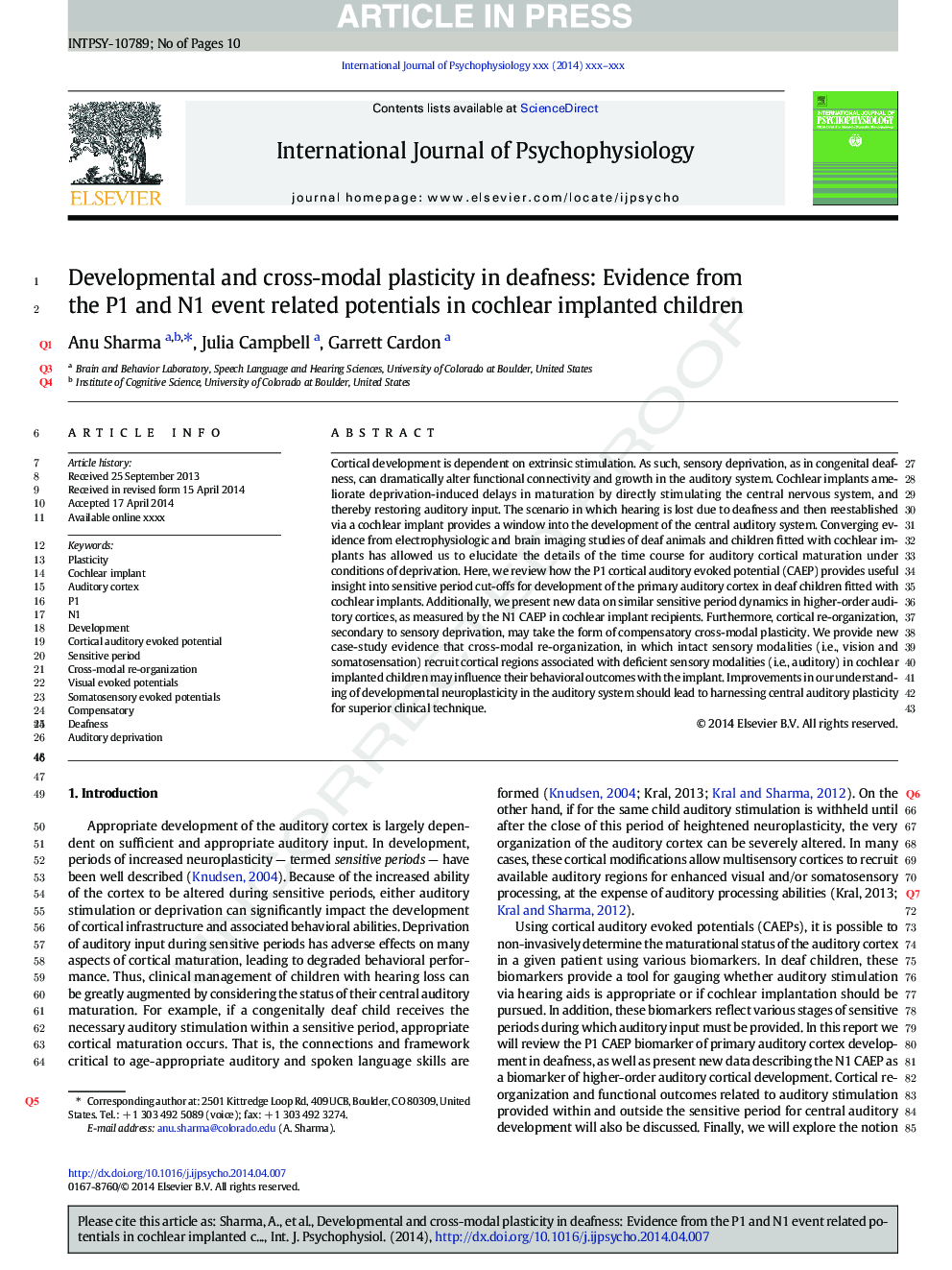| Article ID | Journal | Published Year | Pages | File Type |
|---|---|---|---|---|
| 7295586 | International Journal of Psychophysiology | 2015 | 10 Pages |
Abstract
Cortical development is dependent on extrinsic stimulation. As such, sensory deprivation, as in congenital deafness, can dramatically alter functional connectivity and growth in the auditory system. Cochlear implants ameliorate deprivation-induced delays in maturation by directly stimulating the central nervous system, and thereby restoring auditory input. The scenario in which hearing is lost due to deafness and then reestablished via a cochlear implant provides a window into the development of the central auditory system. Converging evidence from electrophysiologic and brain imaging studies of deaf animals and children fitted with cochlear implants has allowed us to elucidate the details of the time course for auditory cortical maturation under conditions of deprivation. Here, we review how the P1 cortical auditory evoked potential (CAEP) provides useful insight into sensitive period cut-offs for development of the primary auditory cortex in deaf children fitted with cochlear implants. Additionally, we present new data on similar sensitive period dynamics in higher-order auditory cortices, as measured by the N1 CAEP in cochlear implant recipients. Furthermore, cortical re-organization, secondary to sensory deprivation, may take the form of compensatory cross-modal plasticity. We provide new case-study evidence that cross-modal re-organization, in which intact sensory modalities (i.e., vision and somatosensation) recruit cortical regions associated with deficient sensory modalities (i.e., auditory) in cochlear implanted children may influence their behavioral outcomes with the implant. Improvements in our understanding of developmental neuroplasticity in the auditory system should lead to harnessing central auditory plasticity for superior clinical technique.
Keywords
Related Topics
Life Sciences
Neuroscience
Behavioral Neuroscience
Authors
Anu Sharma, Julia Campbell, Garrett Cardon,
